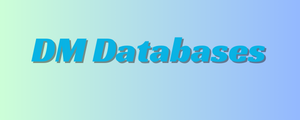In the fast-paced digital landscape, businesses are constantly seeking innovative ways to engage with their target audiences. Among the multitude of tools available, email marketing platforms have emerged as a cornerstone of modern marketing strategies. An email marketing platform is a versatile software solution that enables organizations to create, manage, and optimize email campaigns, fostering meaningful connections with customers while driving business growth. In this article, we delve into what email marketing platforms are and why they hold significant importance in today’s marketing ecosystem. An email marketing platform serves as a centralized hub for all email-related activities. It empowers marketers to design visually appealing emails, manage subscriber lists, automate sending schedules, and analyze campaign performance.
These platforms often offer an array of templates and customization options
Allowing businesses to craft emails that align with their brand identity and resonate with their audience. The importance of email marketing platforms stems from the effectiveness of email as a communication channel. With billions of email users worldwide, it remains a direct and personal Remove Background Image way to reach customers. However, sending mass emails manually can be time-consuming and error-prone. Email marketing platforms streamline this process by automating tasks, saving marketers precious time and ensuring consistent communication. Segmentation is another crucial feature offered by these platforms. Effective targeting relies on sending relevant content to specific groups of subscribers. Email marketing platforms allow segmentation based on factors such as demographics, purchase history, and engagement level.
This level of personalization enhances the customer experience
Leading to higher open rates, click-through rates, and ultimately, conversions. Automation is at the heart of email marketing platforms. Marketers can set up automated workflows triggered by specific user actions. For instance, a welcome email can be sent immediately after DM Databas ES someone subscribes, followed by a series of nurturing emails over time. This automated nurturing process keeps the brand at the forefront of the subscriber’s mind, gradually guiding them through the sales funnel. Analytics and tracking capabilities are integral to measuring campaign success. Email marketing platforms provide insights into open rates, click-through rates, conversion rates, and more. This data empowers marketers to refine their strategies based on real-time performance, leading to continuous improvement. One of the standout advantages of email marketing platforms is their cost-effectiveness. Traditional marketing methods can be expensive and offer limited targeting capabilities.












